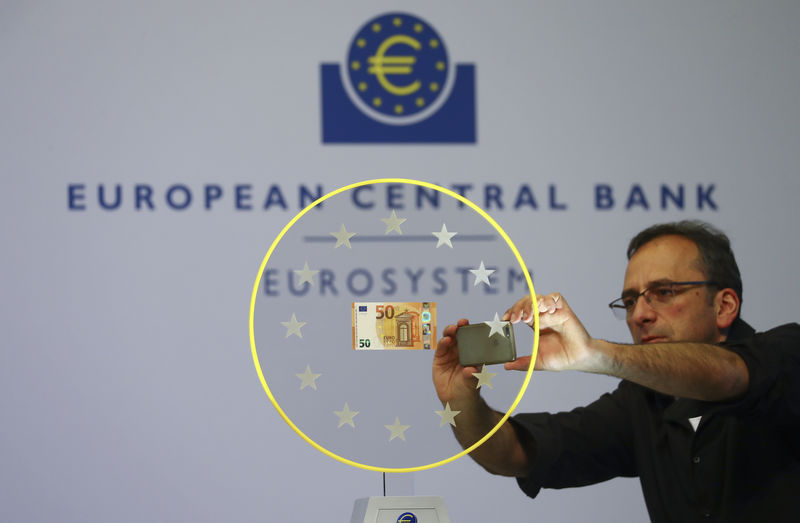(Bloomberg) -- Terms of Trade is a daily newsletter that untangles a world embroiled in trade wars. Sign up here.
Currency bears have been knocked back three times this week by central banks refraining from sounding dovish, putting the euro in the spotlight ahead of next week’s European Central Bank meeting.
The common currency has rebounded after hitting a two-year low earlier this week and options traders now expect gains into the ECB’s Sept. 12. decision. Resistance is growing among European policy makers to ECB President Mario Draghi’s bid to reactivate bond purchases, just as central banks from Canada to Australia have backed away from adding more stimulus.
“There is a non-negligible risk that the ECB may fail to exceed the dovish market expectations,” said Valentin Marinov, the head of currency strategy at Credit Agricole (PA:CAGR) SA. “Taken together with the recent abatement of the political risks in the U.K. and Italy, this could help the euro regain ground versus the the dollar, yen and Swiss franc.”
The euro erased losses Thursday and held above $1.10, while the krona rallied 0.8% against the dollar after Sweden’s Riksbank on Thursday stuck to its plans to withdraw stimulus and said it still sees a rate hike in coming months. The Swedish currency hit its weakest in 17 years versus the greenback earlier in the week on expectations Riksbank would lower its path for rates.
On Wednesday the Bank of Canada kept interest rates unchanged for a seventh straight meeting and said current levels of stimulus were appropriate even as global trade tensions remain elevated.
“Similar to the BOC yesterday, the Riksbank has disappointed market expectations for a more dovish shift in policy,” said Lee Hardman, a currency strategist at MUFG. “Central banks are failing to meet market expectations for more aggressive easing, will it be the ECB and Fed next?”
Money markets have slightly trimmed their expectations for ECB and Fed rate cuts, but are still pricing a 15-basis point move by Draghi next week and at least a quarter-point reduction at the Fed’s Sept. 17-18 meeting. European bonds have fallen this week as investors pare back expectations that the ECB will deliver fresh quantitative easing, following a record-breaking rally.
Markets still see a 50% probability that Canada’s central bank will cut rates in October, though this is down compared with 60% Tuesday, and also expect a lower probability of a rate cut by the Reserve Bank of Australia next month.
Loonie Buoyed
The Canadian dollar reached C$1.3192 to its U.S. peer Thursday, its strongest since Aug. 13. The Australian dollar headed for its first weekly gain in seven at 68 U.S. cents, after the RBA on Tuesday maintained the status quo to watch how recent tax cuts and low interest rates impact the economy.
“Many G-20 central banks are trying to gently walk markets back from pricing in too much easing,” said Greg Anderson, global head of currency strategy at the Bank of Montreal. Investors should “tactically get long currencies where central banks are running out of room to ease, and short those where there is room to ease or where the easing hasn’t started yet,” Anderson said.
